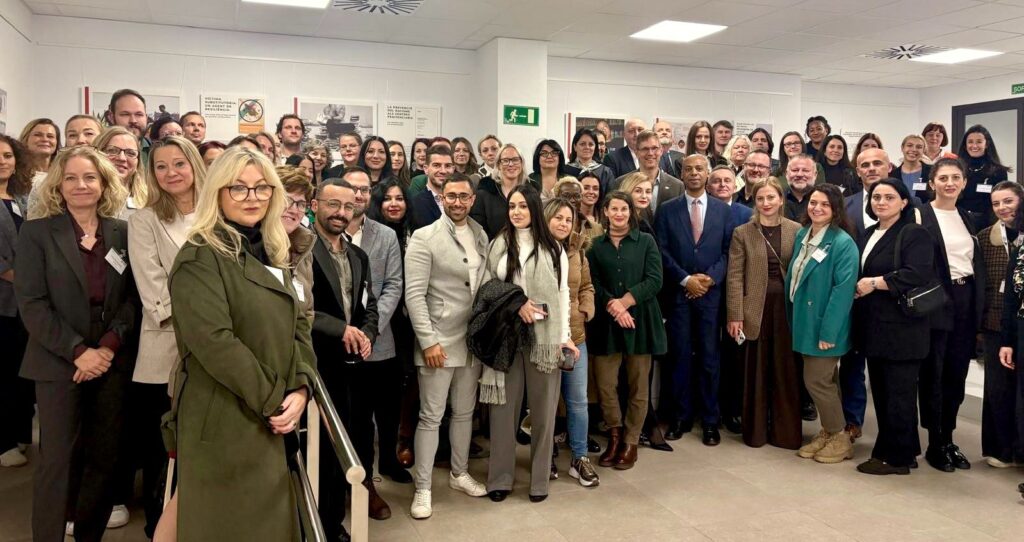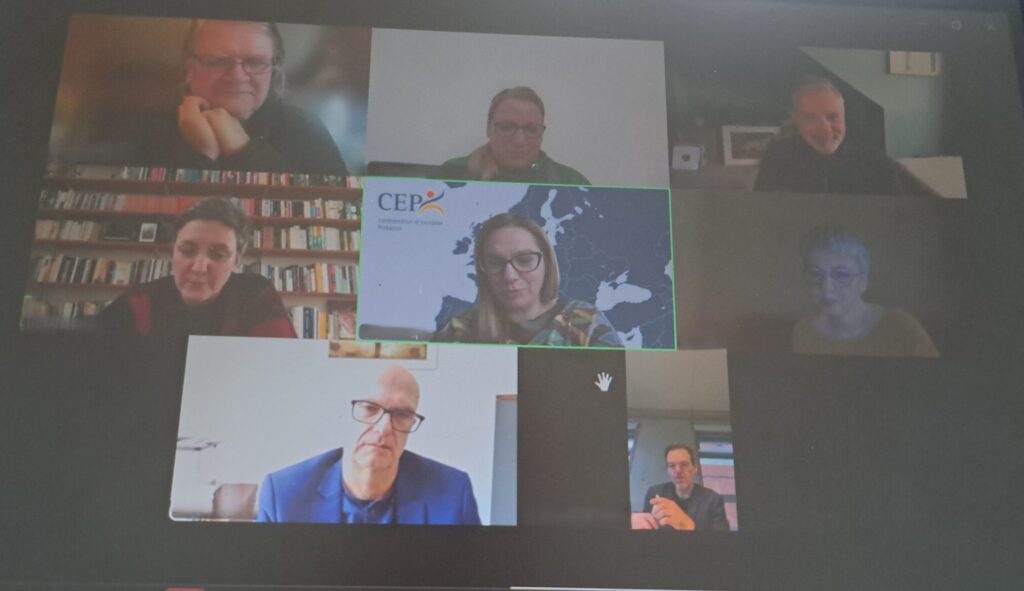Previous Article
News
Apps, tags, tracks: Ten questions about uses of technology in probation
This is an article by Dr. Hannah Graham, Senior Lecturer in Criminology in the Scottish Centre for Crime and Justice Research (SCCJR), Faculty of Social Sciences at the University of Stirling, Scotland. In this article, Dr. Hannah Graham explores some of the issues and questions she raised in her plenary presentation at the CEP European Electronic Monitoring conference in Zagreb, Croatia in April 2018. At the conference, Hannah presented and co-led a workshop alongside Deborah Thompson from the Dutch Probation Service on innovative uses of apps and electronic monitoring technologies in probation.
Technology, especially electronic monitoring (EM) technology, has been used in some probation and community justice settings for decades. Yet with the advent of more options and emerging potential to integrate different functions, a myriad of questions arise. These questions are not so much about practicalities such as battery life or losing internet and satellite signal in rural areas, but are more focused on the ‘who?’, ‘what?’ and ‘why?’ questions of using technology in probation.
Ten questions for discussion and reflection
Here are ten overarching questions (with a few added questions beneath!) about app and electronic monitoring technologies that are worth exploring:
- What are the most important purposes underpinning why online tools and app technologies can be used in probation?
- Motivating and monitoring compliance?
- Providing information: access to services, tools, resources for reintegration?
- Encouraging reflection and insight towards desistance?
- Promoting communication and engagement with probation?
- Risk management and control?
- Others?
- What are the key ethical considerations in advancing more innovative uses of apps and electronic monitoring technologies in probation?
- What are the opportunities and the problems or barriers of integrating uses of apps and electronic monitoring technologies in probation?
- In light of these, what are the implications of integration of functions and information for compliance, enforcement and breach?
- Who owns the app data and/or the EM data? Who can authorise access to the data and why? Do probationers have a choice or say in how and by whom the data they provide is used?
- How are criminal justice apps, their uses and users different to those in (e)health?
- Should uses of apps and electronic monitoring technologies in criminal justice be tailored to assessed levels of criminogenic risk? Why/Why not?
- How do increasing uses of technology affect probation work? How are such uses influenced by probation practitioner cultures, professional ideologies, values, localism and working conditions? (See Jake Phillips, 2017 and Hannah Graham and Gill McIvor, 2017)
- How might we learn from and be led by coproduction? That is, listening to the voices and experiences of people who use the technology in real-world contexts, and working with them in egalitarian and mutually beneficial ways to advance (or reform) it.
- Are tag, watch or (foreseeably) patch body-worn technologies needed for electronic monitoring in probation and community justice? Can uses of apps and digital devices such as smartphones realise a sufficient level of monitoring and other goals?
- How might societal conditions, politics and structural influences affect uses and users of apps and electronic monitoring technologies in criminal justice? For example, in times of austerity, governments may favour digitally-enabled ‘self-management’ tools on the basis that they are possibly cheaper. Another example is if a political and public atmosphere of punitive penal populism leads to uses of technology that are not proportionate or procedurally just.
The first three questions formed the basis of interactive discussions in the CEP EM conference workshop I co-designed and co-led with Deborah Thompson (Netherlands), supported by Pedro Ferreira Marum (Belgium) and Imants Jurevicius (Latvia). Workshop participants from around the world recognised the opportunities and potential benefits of apps and EM technologies in probation and community justice. A collective sense of modest optimism about the potential uses of such technologies was tempered by wise acknowledgement of ethical and practical considerations, including: proportionality, punitive uses compared to change and desistance-oriented uses, informed consent, choice, decision-making, staff workload implications and skillsets, privacy, data protection and integration with probation staff and client portals and digital desks (who can see what?), and potential issues of inequality for users.
No matter what technology can do, we must never lose sight of why it is being used, or if it needs to be used in certain cases at all. New uses of technology are not necessarily innovative if they are not ethical and effective, and this area is fertile ground warranting further research.

Build upon (and stay within) internationally agreed standards
In leading a major international electronic monitoring conference, as well as smaller meetings about apps and probation, the Confederation of European Probation (CEP) has a valuable international leadership role for shaping discussions and sharing learning across borders. At the 2018 conference, I argued that, whether well-established or cutting-edge and emergent, uses of technology in European probation services and systems need to be anchored in important internationally agreed standards and rules. These include:
- European recommendation on electronic monitoring CM/Rec(2014)4;
- Council of Europe standards and ethics in electronic monitoring (Nellis, 2015);
- Compendium of conventions, recommendations and resolutions relating to prisons and community sanctions and measures (2017);
- European rules on community sanctions and measures CM/Rec(2017)3;
- European general data protection regulation (GDPR), including the EU Directive 2016/680 on data protection in the police and criminal justice sectors.
Crucially, domestic as well as European policy, practice and regulatory guidance need to keep up with the pace of technological change (and entrepreneurial ambitions which might drive it) and its potential applications and integration within probation and community justice (see Stuart Ross, 2018). This is about advancing uses of tech in ways which do not lose sight of intended purposes (‘goal-oriented uses’ as the Dutch say), nor in ways which depart from the foundational principles and standards in which such goals stay safely anchored.

Related News
Keep up to date with the latest developments, stories, and updates on probation from across Europe and beyond. Find relevant news and insights shaping the field today.
Recap

CEP-Europris, Probation in Europe
Recap of CEP and EuroPris Meeting with Catalan Authorities
04/12/2025
On 3 December, on the occasion of the joint CEP and EuroPris Workshop on Transition from Prison to Probation held at the Centre for Legal Studies and Judicial Training (CEJFE) in Barcelona, representatives from both international organisations met with senior officials from the Catalan Ministry of Justice to present their current work, reflect on ongoing cooperation, and explore shared priorities for future collaboration.
Recap

CEP-Europris
Workshop on Transition from Prison to Probation: Continuity of Care and Control
03/12/2025
On 2–3 December 2025, 71 participants from 22 European countries and jurisdictions attended the Workshop on Transition from Prison to Probation: Continuity of Care and Control, jointly organized by CEP and EuroPris. The two-day workshop aimed to explore strategies for ensuring continuity of care and control during the transition from prison to probation.
Recap

Research
Recap: online Expert Group meeting on Research
02/12/2025
On Friday, 28 November 2025, the annual meeting of the Expert Group on Research took place online.
Probation Journal

Domestic violence, Gender-based violence
New evaluation on whole family approach to domestic abuse
26/11/2025
Interventions Alliance has published a new evaluation of a Hub coordinated on behalf of police forces in the south of England, focused on tackling violence against women and children through a whole family approach. The Hub supports victims and perpetrators of domestic abuse and works across policing, health and social services.
New

Probation in Europe
New EU Judicial Training Strategy 2025-2030 adopted
26/11/2025
New updates from the European Commission highlight key priorities for judicial training in Europe, alongside new tools supporting transparency and access to data.
New

Gender-based violence
International Day for the Elimination of Violence Against Women and Girls
25/11/2025
Today, 25 November, marks the International Day for the Elimination of Violence Against Women and Girls. It is a global reminder, recognised by UNESCO and the wider international community, of the urgent need to prevent violence, support those affected by it, and strengthen collective action. The day also opens the 16 Days of Activism, a worldwide campaign that calls for sustained engagement to end all forms of violence against women and girls.
Subscribe to our bi-monthly email newsletter!
"*" indicates required fields
- Keep up to date with important probation developments and insights.

